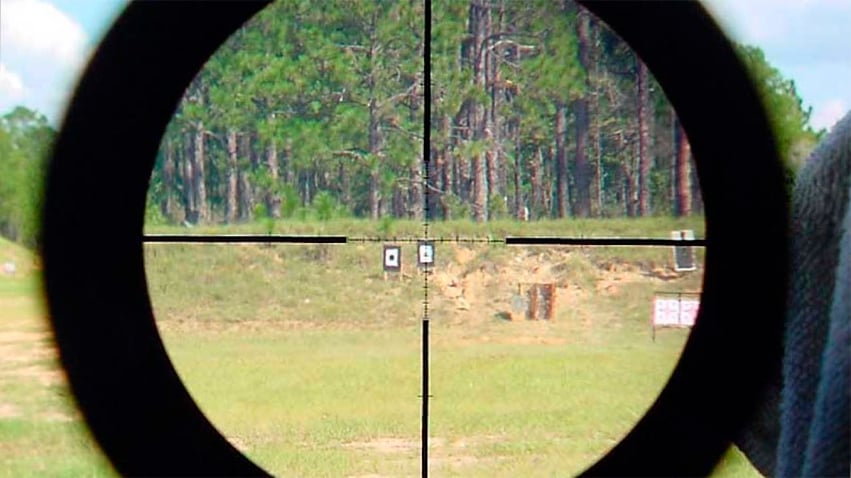What is the difference between the first focal plane (FFP) and second focal plane (SFP) reticles?
When selecting a scope for your air rifle, it’s not enough to understand the differences between the various types of scopes.. It’s equally important to understand the main differences between first focal plane (FFP) and second focal plane (SFP) scopes. This information will have a significant impact on your shooting experience, from accuracy at various distances to ease of use in different shooting scenarios.
In this article, we explain the meaning of FFP and SFP scopes, the pros and cons of each option, and how you can find the one that suits your profile as a sports shooter.
What are the differences between First Focal Plane (FFP) and Second Focal Plane (SFP) scopes?
The difference between First Focal Plane (FFP) and Second Focal Plane (SFP) telescopic sights lies in the position of the reticle relative to the magnification lens.
In FFP scopes, in FFP scopes, the reticle is placed in front of the magnification lens, causing it to increase or decrease with the target as the magnification changes. This feature allows the subtensions of the reticle to remain accurate at any magnification, which is beneficial for long-distance shooting.
On the other hand, SFP scopes have the reticle placed behind the magnification lens, keeping it at a constant size regardless of the magnification. This constant size means that the subtensions of the reticle are only accurate at a specific magnification, typically the highest setting. This feature makes SFP scopes suitable for short-range shooting, where quick target acquisition and a sharp reticle are essential.
Below, the difference between these two systems is represented.
FFP scopes

FFP scopes

What does FFP mean?
FFP stands for “First Focal Plane,” meaning the reticle is positioned near the front of the scope. This placement means that as magnification increases, the reticle appears to enlarge, and when decreased, it appears to shrink. This feature allows the shooter to use the reticle markings to estimate range and compensate for bullet drop at any magnification level.
What does SFP mean?
SFP means ‘Second Focal Plane,’ indicating that the reticle is placed at the back of the scope. In SFP scopes, the reticle size appears the same to the shooter at all magnification levels. This can be advantageous in terms of clarity and ease of use, but it requires the shooter to calculate bullet drop and range at a specific magnification level (usually the highest).
What are the pros and cons of FFP and SFP scopes?
Pros of FFP scopes:
- Consistent ranging scale at any magnification.
- Ideal for long-range shooting and situations requiring quick adjustments.
- The reticle size adjusts with magnification, aiding clarity at high zoom levels.
Cons of FFP scopes:
- The reticle may appear too small at lower magnification, making it difficult to see under certain conditions.
- Generally more expensive than SFP scopes.
If you’re looking for a high-quality FFP telescopic sight, we recommend exploring the range of FFP telescopic sights available at Mundilar’s online store.
Pros of SFP scopes:
- The reticle size remains constant, offering ease of use and visibility at all magnification levels.
- Typically less expensive than FFP scopes.
- Ideal for short to medium-range shots and in situations with variable lighting.
Cons of SFP scopes:
- Range estimation and bullet drop calculations are only accurate at a specific magnification setting.
- Less versatile for dynamic long-range shooting scenarios.
In Mundilar’s online store, you will find a selection of the highest quality SFP telescopic sights on the market.
How to choose between FFP and SFP scopes?
Distance: For long-range shooting, FFP scopes are preferable due to their consistent ranging scale. For short and medium range shooting, SFP scopes are usually sufficient.
Competition shooting: FFP scopes are advantageous in competitions involving variable distances, as they allow for quick adjustments without recalculating bullet drop. SFP scopes may be suitable for competitions with fixed distances or where shots mostly occur at a known magnification level.
Hunting: For hunting in open terrain with longer shots, FFP scopes are beneficial for their versatility in range estimation. In dense environments, low visibility, or for closer shots, the constant size of the reticle in SFP scopes may be more practical.
Cost and personal preference: Budget considerations may lead us to choose SFP scopes, which are generally more affordable. Personal preference in terms of ease of use, clarity, and shooting style also plays an important role.
Conclusion
In conclusion, both FFP and SFP scopes have their unique advantages and disadvantages. The choice largely depends on the intended use, shooting distance, budget, and personal preference. Understanding these differences ensures that you choose the right scope for your air rifle, enhancing your accuracy and shooting experience.
Fortunately, you can explore the different options of FFP and SFP scopes today at Mundilar’s online store.. We are confident that you will find the ideal scopes for you and your ambitions in sports shooting. If you have any questions, feel free to contact us at [email protected].

